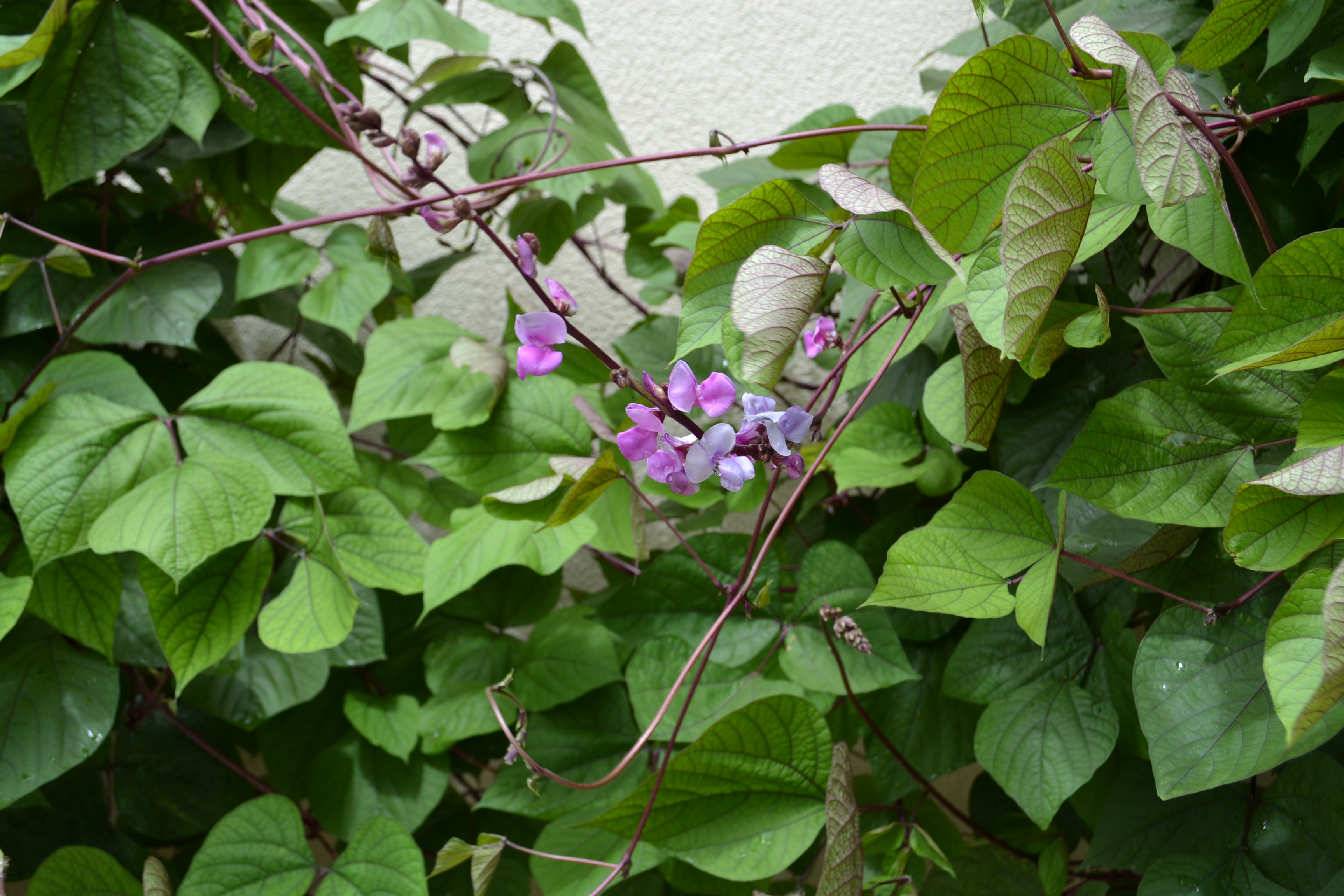
by Beth Bolles | May 6, 2015
Everyone is interested in growing an easy plant that offers interest all throughout the warm season. Look no further than an old favorite, the purple hyacinth bean, Lablab purpurea.
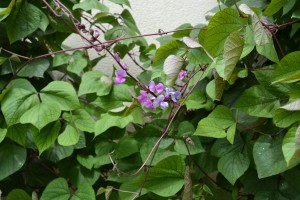
Purple flowers are held above foliage.
An warm season annual vine that grows easily from seeds plants directly in the ground or started in small pots, purple hyacinth bean will quickly cover a trellis, fence, or other sturdy support that you provide. One of the features will be beautiful purple flowers that form on purple stems during the summer. Purple pods will form after the flowers fade and persist until a frost. Mature seeds can be collected and saved for planting the following spring. Seeds that fall to the ground are likely to sprout on their own when soils warm again the following year.
Even though purple hyacinth bean is an edible plant in many parts of the world, it is mostly considered an ornamental in our area. One of the reasons is that raw beans are poisonous and must be properly cooked before eaten. Because of the toxicity of the beans, it is best to plant in the ornamental garden rather than the edible garden.
Additional features of this easy vine are that it is low maintenance, requiring little fertilization and it attracts bees and butterflies. Install seeds or transplants in well drained soil in full sun and you are ensured a plant that will attract attention.
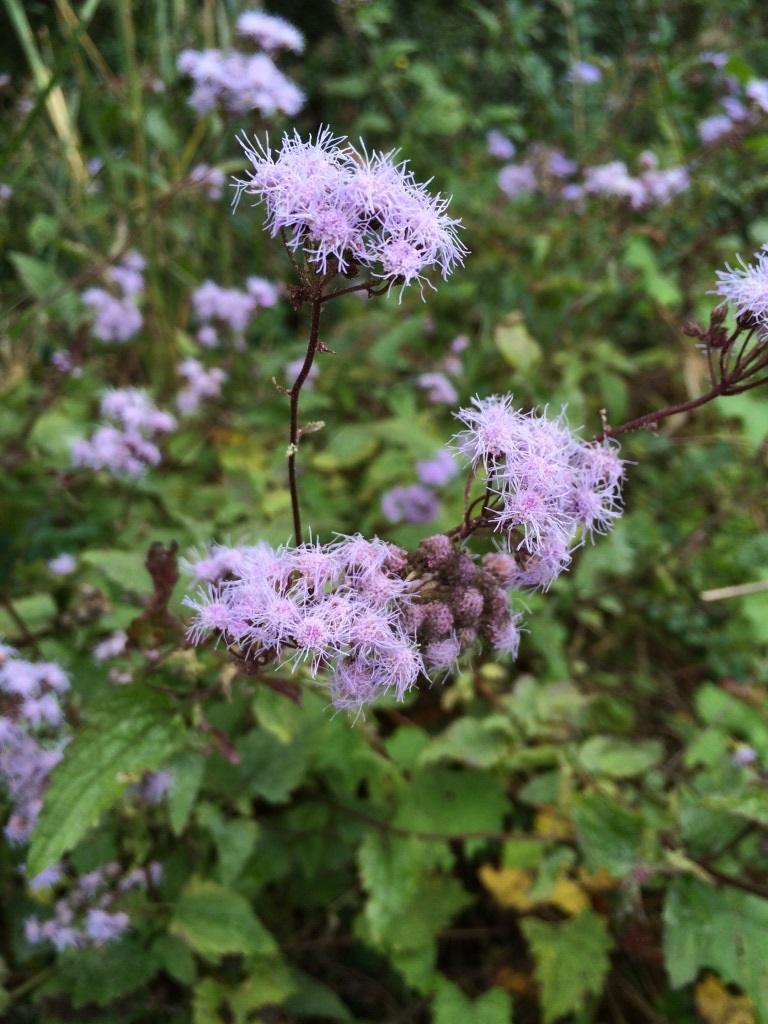
by Mary Salinas | Nov 18, 2014
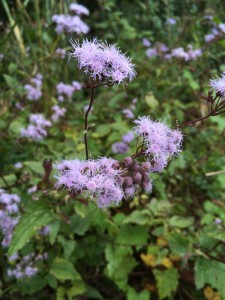
Blue Mistflower – Image Credit Mary Derrick, UF / IFAS
Here’s a beautiful native perennial wildflower that is easy to grow and generally available in the independent nursery trade. In the wild, you can encounter them at the edges of woodlands and ponds as they prefer moist areas. Blue mistflower, Conoclinium coelestinum, performs well as a perennial in the home landscape but does spread easily by seed and will spread in the garden. It also spreads through underground rhizomes which allow it to form large clumps. This is an advantage for the informal garden, however, the gardener who prefers a more formal look will have a bit more maintenance in controlling that spread.
The abundant flowers look like bluish-purple puffballs on the top of the stems. The color is unusual and adds a striking touch in the garden. The bloom season is mid-summer to mid-fall. Butterflies are frequent visitors, making this an excellent addition to your butterfly garden.
Blue mistflower has a full rounded form and will grow to 3 feet under optimum conditions. Leaves are opposite and have a triangular shape. Growth and blooming is best in full sun to part sun conditions.
Give it a try!
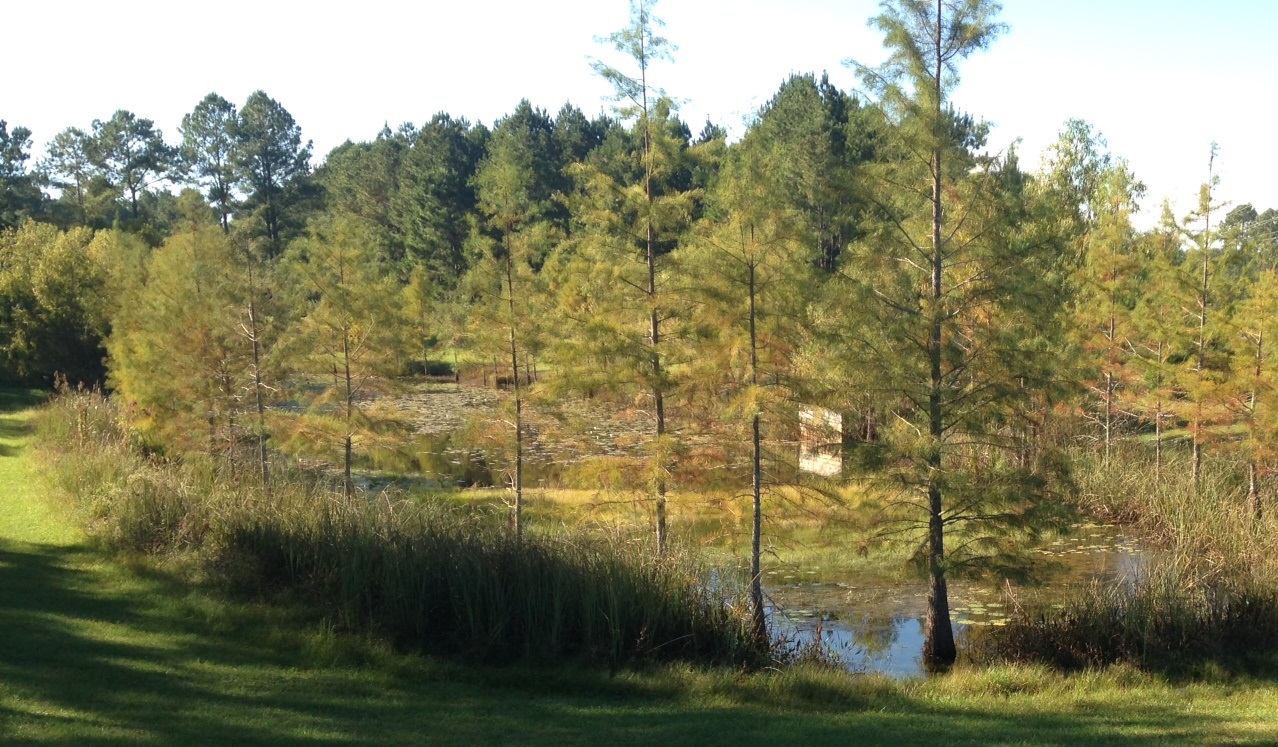
by Carrie Stevenson | Nov 4, 2014
I recently met with a group of community volunteers who are interested in providing more butterfly habitat in our public areas. Monarchs migrating to Mexico this time of year use northwest Florida as a stopover and feeding site, but if host plants are unavailable they cannot sustain a healthy population. In addition, Gulf fritillaries, buckeyes, and swallowtails are spending time in local butterfly gardens, feeding on passion vine, butterfly bush, milkweed, and more.
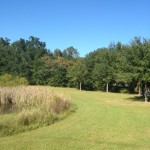
The grassy area between this stormwater pond and woods is an ideal location for a butterfly garden. Willows growing along the edge attract butterflies already. Photo credit: Carrie Stevenson
The volunteers and several county staff visited three publicly-managed stormwater ponds, which are an ideal setting for what some proponents term “Butterflyscaping.” The open space, water source, and diversity of plants along the edge of the ponds lend themselves well to wildlife habitat.
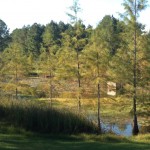
The permanently wet detention pond lined with cypress trees and sawgrass also provides habitat for fish, birds, and reptiles. Photo credit: Carrie Stevenson
When considering adding vegetation to a neighborhood common area, there are several things to consider. First is maintenance. If there’s an annual contract with a landscaping company to mow or maintain an area, you’ll want to have a discussion about excluding the new planting area from mowing to establish new vegetation. You’ll also want to look at the soil and amount of sunlight to determine the best plant choices for the area.
A variety of groundcovers, flowering plants, shrubs and small trees will typically provide food for both caterpillars and adult butterflies. Once established, these new landscape additions will not only provide habitat and color, but may end up reducing maintenance costs as well.
For more information, the UF publication “Community Butterflyscaping” is an excellent resource for landscape design, plant choices, and practical steps toward getting started with a neighborhood or schoolyard project.
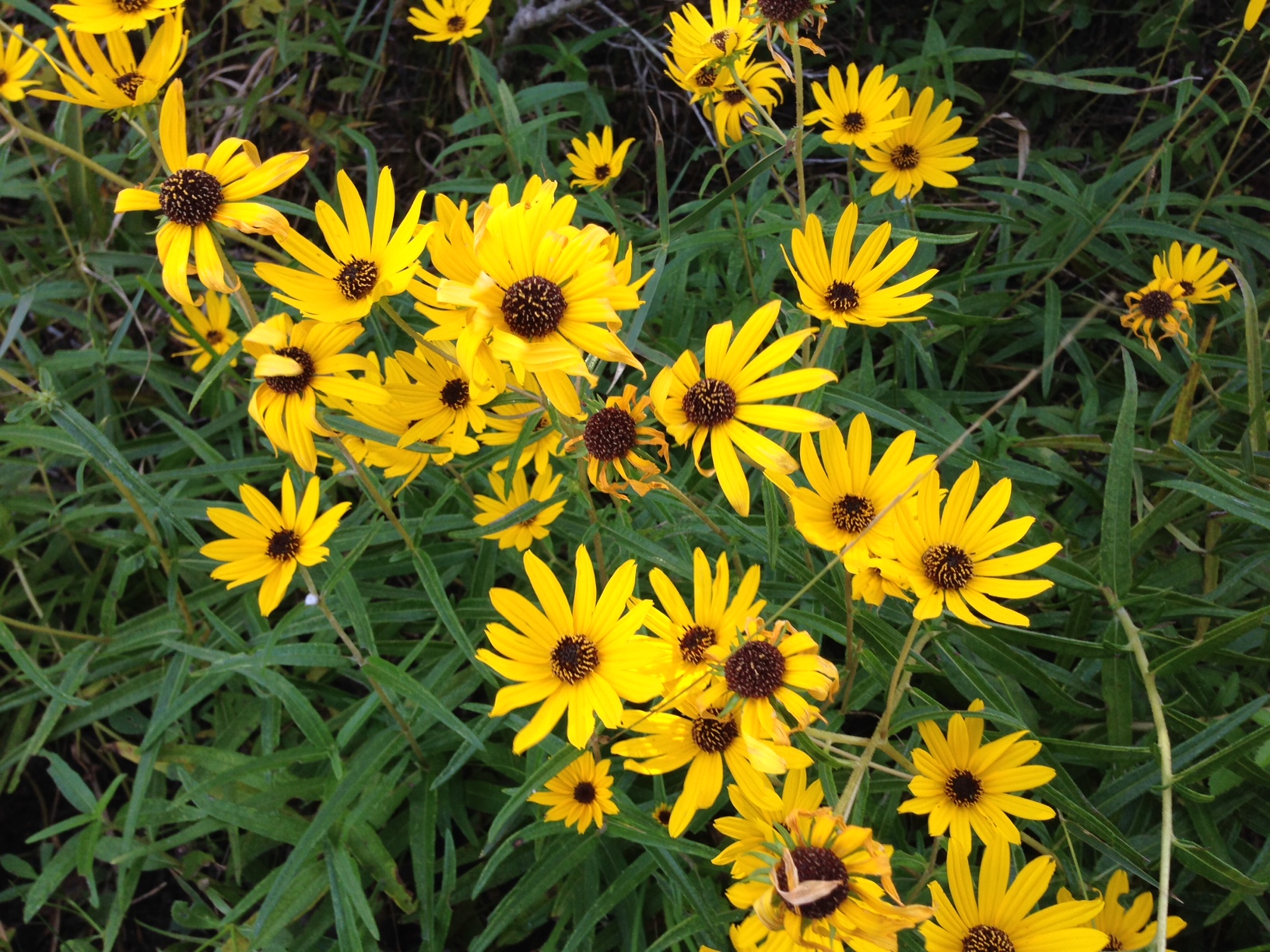
by Mary Salinas | Sep 23, 2014
In the midst of your September strolls through natural Florida, you may come across this native beauty, the narrowleaf sunflower, Helianthus angustifolius. Another common name is swamp sunflower. I found this gorgeous patch in the photo close to the shore of Apalachicola Bay. It occurs throughout Florida and north throughout much of the eastern United States. Florida is fortunate to be home to over 20 native species of sunflower.
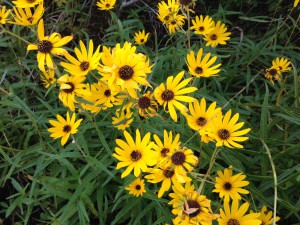
Narrowleaf Sunflower. Photo credit: Mary Derrick, UF/IFAS Extension.
This perennial starts blooming in late summer and dazzles admirers throughout autumn. The 2 to 3 inch flowers with bright yellow petals and brown centers are attractive to butterflies and other pollinators. What a great addition to your butterfly garden!
Plants generally grow to about 2 foot tall but they can grow a bit leggy to 6 foot. If desired, keep them more compact through pruning in late spring. Clumps can be divided every few years to spread them out or to share with friends and neighbors.
Like all sunflowers, it loves full sun but can tolerate some light shade. Narrowleaf sunflower is salt and flood tolerant and will do well in most soil types, however it does best in consistently moist conditions.
Narrowleaf sunflower plants may be difficult to find in the nursery trade but they can be readily started from seed.
For more information and seed sources:
Florida Wildflower Foundation
Atlas of Florida Vascular Plants: Helianthus species
Common Native Wildflowers of North Florida
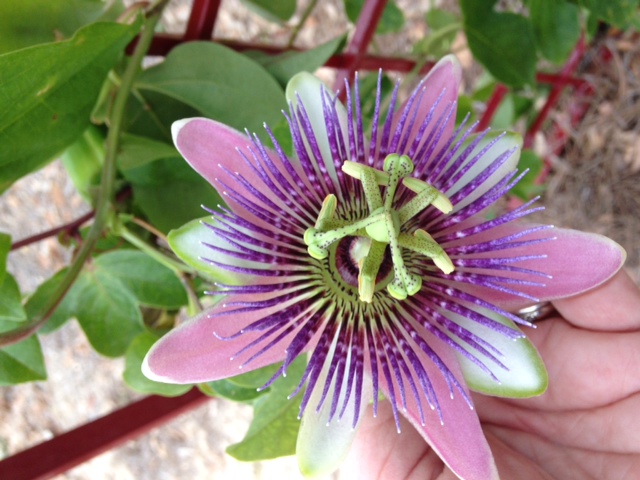
by Julie McConnell | Sep 2, 2014
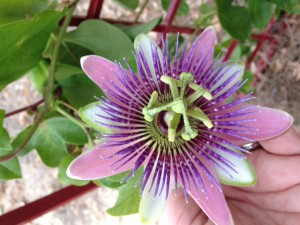
Purple passionflower
Gulf Fritillary caterpillars have a voracious appetite for purple passionflower vine Passiflora incarnata! This native vine is a host for the Gulf Fritillary Butterfly Agraulis vanilla larvae, is easy to grow, and readily available in garden centers.
Like any other vine, it grows quickly and may spread across your garden, so keep this in mind when choosing a location. It prefers full sun, is drought tolerant, adapts to many soil types, and should be given support for twining tendrils. Purple passionflower has intricate purple flowers that are followed by the fruit called a maypop, which is another common name for this vine.
Gulf fritillary butterflies are primarily orange with some black and white markings. They prefer sunny areas and adults will feed on nectar from many different flowering plants. However, they are more specific about where they will lay eggs because the diet of the caterpillar is more selective than adults.
If you have purple passionflower in your landscape, look for tiny yellow eggs and orange caterpillars with black spikes to see if you have a backyard Gulf fritillary nursery. Plants may be totally defoliated by the hungry caterpillars, but healthy plants can tolerate the damage and should flush back out without difficulty.
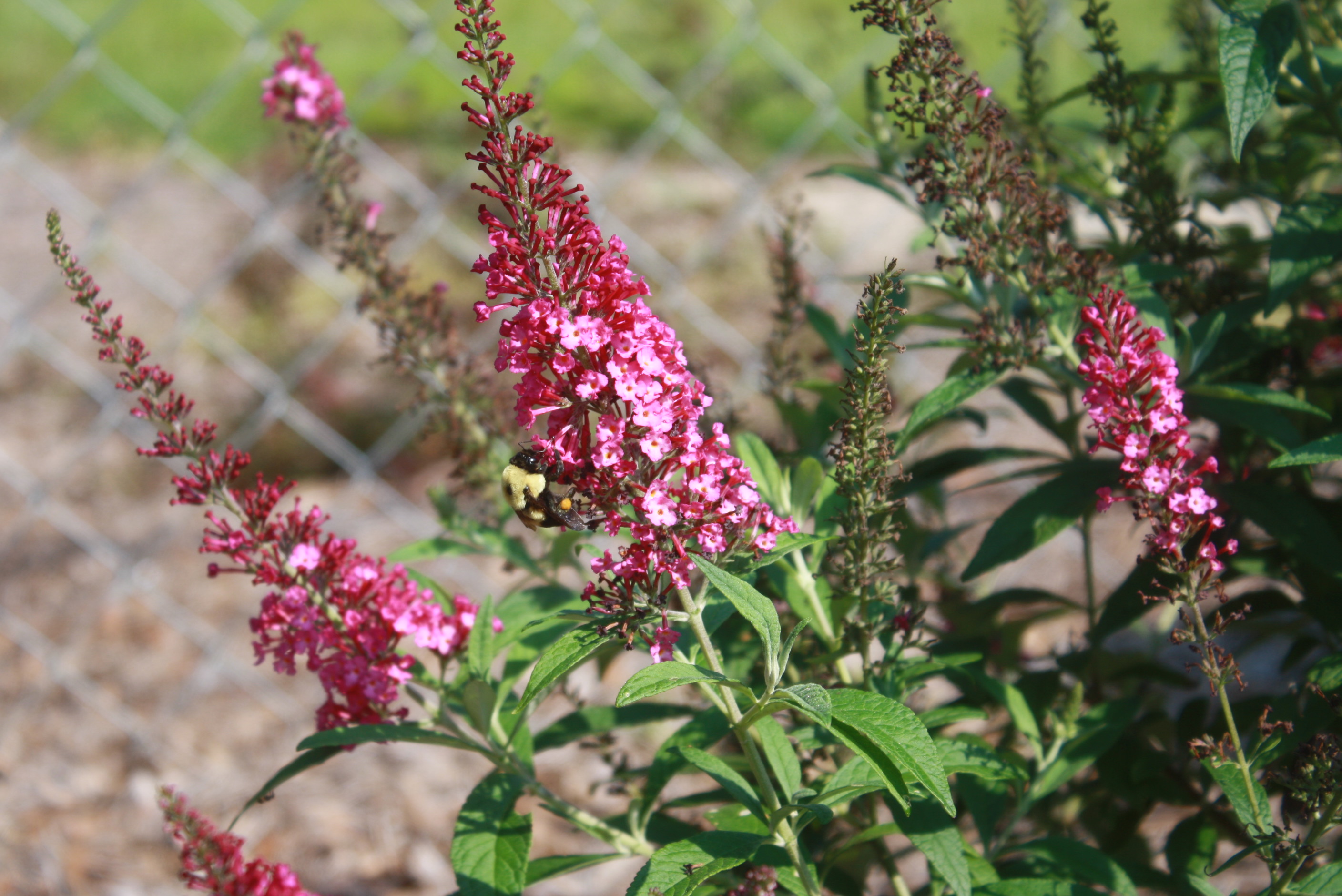
by Julie McConnell | Aug 12, 2014
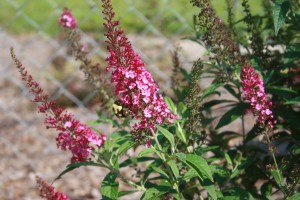 Most people appreciate a colorful landscape, but may not have a lot of time or money to invest into keeping it looking good. Add to that the low nutrient soils that do not hold water that are common in the western Panhandle and keeping an attractive yard becomes even more challenging, especially if irrigation is not available.
Most people appreciate a colorful landscape, but may not have a lot of time or money to invest into keeping it looking good. Add to that the low nutrient soils that do not hold water that are common in the western Panhandle and keeping an attractive yard becomes even more challenging, especially if irrigation is not available.
If you are looking for plants that require minimal maintenance beyond watering until establishment here are a few you might want to try.
Butterfly Bush Buddleia spp.
There are many different mature sizes and colors, but if you have a small space consider a dwarf like CranRazz or the Lo & Behold® series. Butterfly bush blooms throughout the warm season and if it slows down, just deadhead or prune heavily and it will flush out with new foliage and blooms. As the name suggests, butterflies are attracted to the blooms.
Hyssop
Another plans that is very heat tolerant with low water requirements is Hyssop Agastache rupestris. Fine textured foliage and flowers that bloom all summer and thrive on neglect. These come in hot colors including orange, pink and bicolor varieties.
Sedum
Sedum love hot, dry spots and Sedum rupestre “Angelina’ is a groundcover type with showy yellow foliage. It performs great in containers or sprawling over beds. Evergreen with a bronzy winter color, it stands out all year. Tiny yellow flowers appear to float above the foliage in the early summer, but do turn brown and need to be snipped off to keep plants looking tidy.













